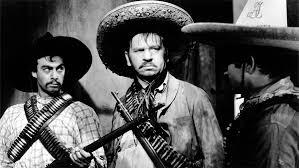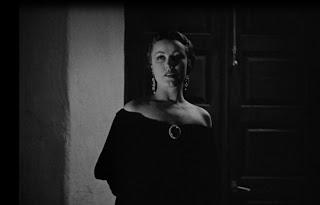
"You can't win a revolution with love, you need hate!"
Here's the granddaddy of every Mexico-set "Zapata Western," from Vera Cruz and A Bullet for the General to The Wild Bunch and Three Amigos! David O. Selznick's Viva Villa! (1934) fictionalizes Mexico's famous bandit-turned-revolutionary, offering viewers surprising complexity, regrettable stereotypes and epic battle scenes.As a boy, Pancho Villa (Wallace Beery) witnesses his father's murder by brutal landowners and swears revenge. Decades later, Villa leads an army of brigands who terrorize the Mexican countryside. He forms an alliance with revolutionary leader Francisco Madero (Henry B. Wathall), who encourages Villa to harness his resentment into the cause. After Madero succeeds he has no further use for Villa, who flees to the United States: but when a military junta ousts Madero, Villa returns to redeem the revolution.
It's difficult to watch parts of Viva Villa!, as Ben Hecht's script indulges obnoxious stereotypes. Villa's a simple, salt-of-the-Earth doofus who can't read and compares a map of Mexico to an "upside-down sombrero!" Extras sound less like Mexicans than hard-bitten New Yorkers, like the impatient aide who urges Pancho: "If we're gonna kill those fellas in Tampico, we've gotta go pretty quick!" Even worse is Villa's henchmen stealing everything in sight, or procuring women for their chieftain to rape. Both developments are played for laughs, because what's funnier than horny, greedy Mexicans?

Considering that the movie came less than two decades after Villa's Columbus Raid and John Pershing's punitive expedition, it's surprising that Viva Villa! even tries to sympathize with the Mexican Revolution. It's made easier than the filmmakers elide Villa's anti-American antics, while the presence of a John Reed-like journalist (Stuart Erwin) cheerleading Villa helps our sympathy stick. It's not a wholly flattering portrayal, occasionally queasy and bordering on racist in spots, yet it's more layered than you'd expect from a '30s biopic.
Selznick's outsized production certainly helps. While journeyman Jack Crawford is the credited director, large chunks of the movie were shot by Howard Hawks and William Wellman, which shows in the elaborate action scenes. The biggest battle is quite a sight, where Villa's men destroy entrenched Federales with handmade grenades and horsemen thunder through a village, their hoofbeats drowned under machine guns. It's paired with skilled montage work, especially Villa recruiting his army in quick cuts and striking, Eisensteinian close-ups, forging hardscrabble peons into an army of millions.

Wallace Beery goes for the lusty "ethnic" acting beloved of Anthony Quinn in later days. He's neither subtle nor entirely believable as a Mexican, but compelling as a scenery-chewing, larger-than-life earthshaker. Beery's over-sized scenery-munching overshadows the more subtle work of supporting players. Henry B. Wathall's Madero is an excellent foil, a gentle idealist unfitted for wartime leadership; Joseph Schildkraut makes a hateful classist villain. Fay Wray steals her scenes as a rich girl uncharmed by Villa's politics or virility.
It's unfair to (entirely) dismiss Viva Villa! for being a product of its time. Awkward and regrettable it might occasionally be, it's still more entertaining than other takes on the subject, like Elia Kazan's garbled Viva Zapata! or the dozens of ill-conceived Villa flicks featuring Yul Brynner, Telly Savalas and others even broader than Wallace Beery.

